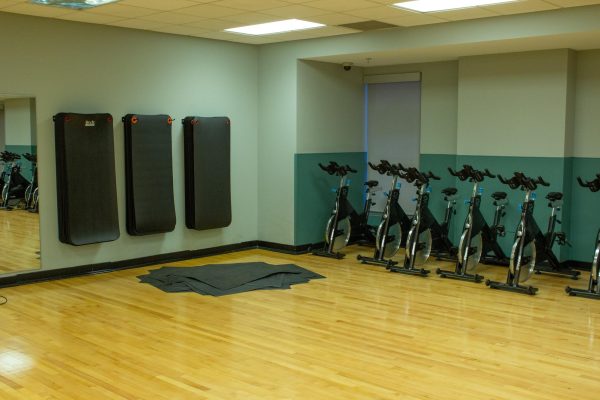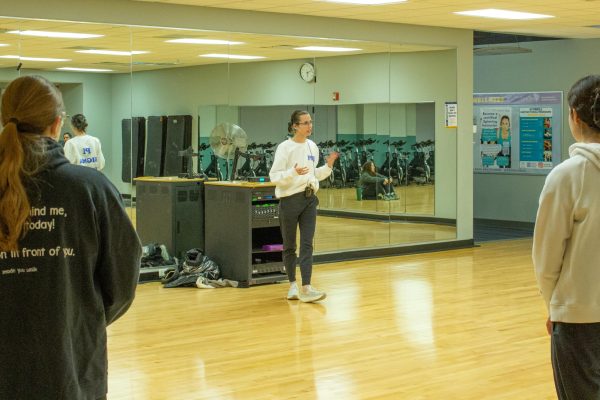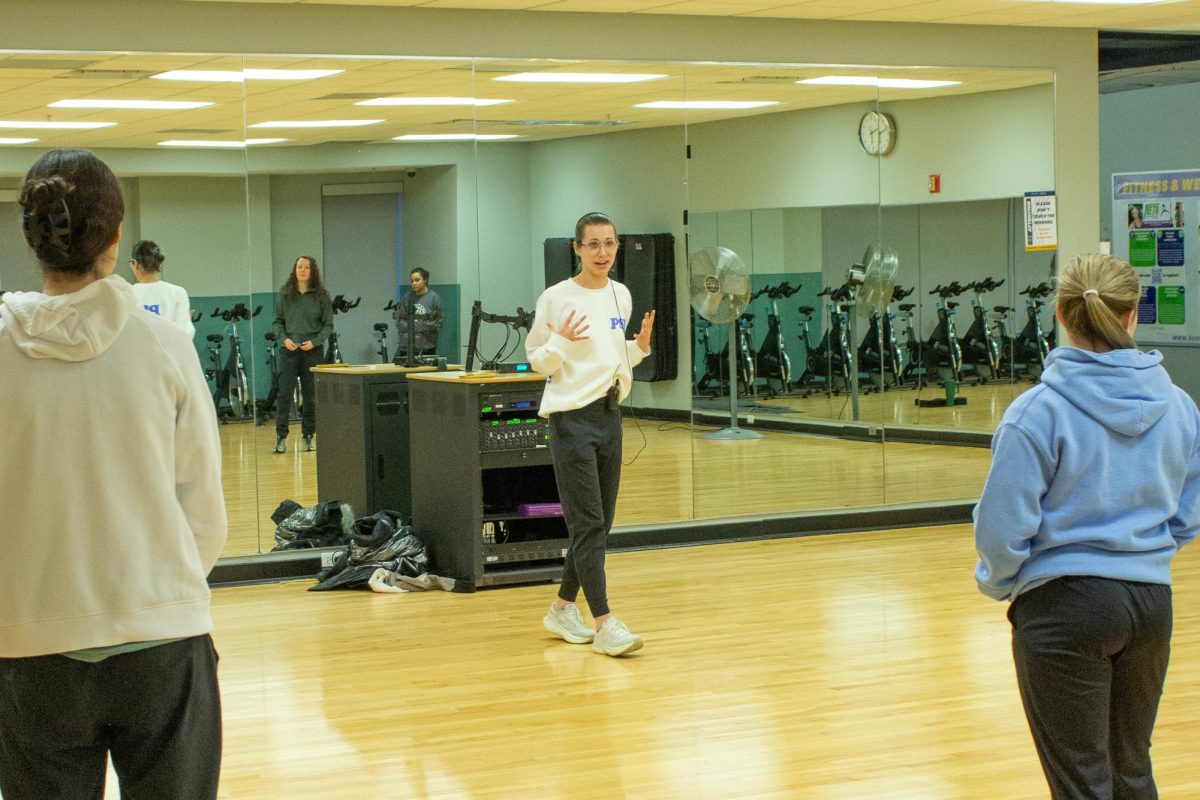Self-defense classes taught at the Recreation and Wellness Center prepare students to protect themselves from unexpected dangers.
Hannah Shaffer, a sophomore fashion design major, will study abroad in New York next semester, and she wants to learn how to protect herself.
She decided to take a women’s self-defense class at the Rec to prepare for her journey.
“I wanted to protect myself and feel confident in any situation,” Shaffer said.
Her biggest concern with personal safety is not knowing what could happen.

Grace Hubbard, sophomore nursing major, said she feared being a target.
“I just want to feel more comfortable in crowds and in public spaces,” Hubbard said. “I want to feel like I can protect myself, and not feel vulnerable.”
Helena Skibbe, a junior marketing major who teaches the class, wanted to share her expertise with others to help more people know how to defend themselves.
“I took a self-defense class during my first year of college, it was empowering, it made me feel confident and it made me feel safe and comfortable,” Skibbe said. “I wanted to be able to give that feeling to more people and spread it around.”
She hosts the class every Monday and Wednesday. There is no age limit for the class, and it costs $75 to take for the semester.
The Center for Violence Prevention and Self-Defense Training is a nonprofit organization that offers self-defense training and violence prevention classes to at-risk communities in New Jersey.
“It’s important for women to know how to defend themselves in dangerous situations because it can help them to stay safe, feel confident and reduce risks of harm,” said William DeMuth, co-founder of The Center for Violence Prevention and Self-Defense Training. “Our main goal is to educate at-risk communities and offer teaching for self-protection.”
One of the first lessons the women’s self-defense class taught was how to be aware of one’s surroundings, and how to use words like “stop” and “no” before using force.
“The first day of class was more verbal,” Shaffer said. “There was no striking, such as hitting, or hands-on activities. It was more of learning your voice, screaming, ‘No, get away,’ stuff like that.”
Skibbe said being aware of your surroundings is a big part of self-defense.
“I think that 90% of self-defense education is before the confrontation even starts,” she said. “Keep one headphone out of your ear when walking around, don’t look down at your phone in public, be aware of your surroundings at all times.”
Skibbe recommended changing small everyday habits to prevent potential attacks, like checking the backseat when getting into a car.

“Those tiny little things can keep other things from happening,” Skibbe said.
DeMuth brought up three ways women can protect themselves when faced with danger.
“Violence against women, including assault and harassment, is a serious issue,” DeMuth said. “The best ways for women to defend themselves is a combination of awareness, prevention and physical techniques.”
Hubbard and Shaffer want fellow students to always pay attention to their surroundings.
“Be aware of everything going on around you. It’s easy to get distracted by phones,” Shaffer said. “By just putting them away when walking, you may seem like a less easy target to a potential threat.”
Hubbard said to not be afraid to take a class like self-defense, it’s important to know how to protect oneself.
“There’s so many resources at Kent, like this class,” she said. “Take advantage of the resources in the class. Don’t be afraid to put yourself out there. Take the opportunity to take a class like this.”
Kailon Fischer is a reporter. Contact her at [email protected].


